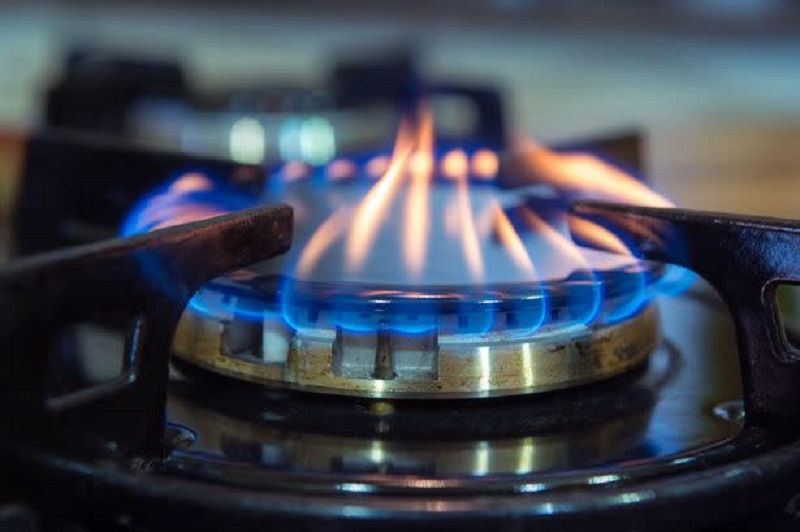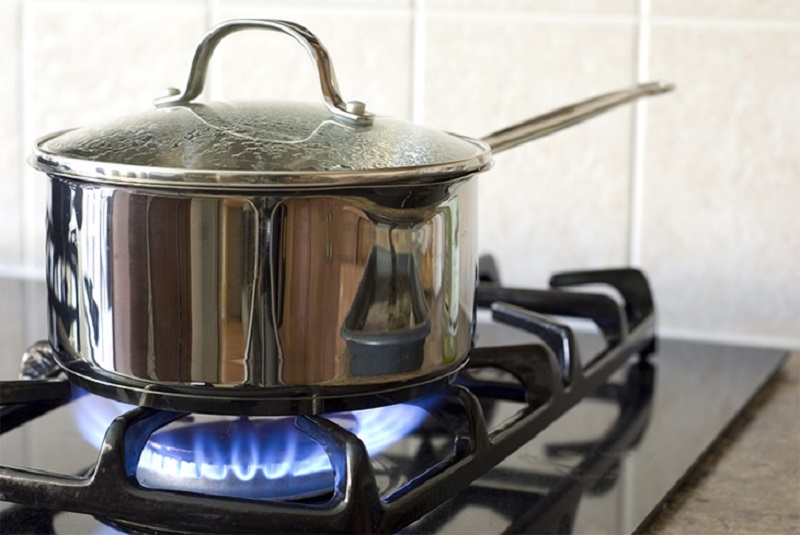Gas Stove Structure

The operating principle of a gas stove is quite simple. It utilizes gas pipes to direct gas from the cylinder to the burner located under the stove top. When the knob is turned, the ignition system sparks to ignite the gas, causing a flame to erupt on the stove top and generate heat for cooking. When the knob is turned off, the gas shut-off mechanism under the stove top activates to block the gas flow, causing the flame to extinguish due to the lack of fuel.
Induction Cooktop Structure
On the other hand, induction cooktops have a slightly more complex structure and operating principle than gas stoves. Induction cooktops were invented and patented in the early 19th century and operate based on the principle of converting electromagnetic fields into heat for cooking.

Inside an induction cooktop is a copper coil located beneath a ceramic glass surface, which provides insulation and electrical resistance. When an electric current passes through the coil, a magnetic field is instantly generated. When we place a pot or pan with a ferromagnetic base on the cooktop, the magnetic field in the coil induces eddy currents, converting electrical energy into heat and gradually warming the pot’s base until it is hot enough to cook food.
Comparing the Advantages and Disadvantages of Gas and Induction Cooktops
Due to their different structures and operating principles, it is evident that each type of cooktop has its own set of advantages and disadvantages. These are outlined below:
| Gas Stove | Induction Cooktop | ||
| Advantages |
– Any type of pot or pan can be used on a gas stove. – Heat intensity can be easily adjusted. – Long-lasting with minimal breakdowns. Spare parts are readily available for repairs. – Affordable, catering to all economic backgrounds. |
Advantages |
– Aesthetically pleasing and modern design. – High-quality glass surface that is easy to clean. – Smart features such as timers, diverse cooking modes, and child locks. – Quick, convenient, and safe cooking. – Uninterrupted cooking without the worry of running out of gas mid-cooking. |
| Disadvantages |
– Simple structure with no standout features. – Consumes gas for cooking, requiring cylinder replacement when empty. – Safety concerns with a higher risk of fire and explosions. – Difficult to thoroughly clean the stove top and burner. |
Disadvantages |
– More expensive compared to gas stoves. – Requires pots and pans with ferromagnetic bases. – Consumes electricity for cooking. – Cooking can be interrupted by unexpected power outages. – Repairs can be challenging, and spare parts may not be readily available for some models. |
Which is More Cost-Effective: Gas or Induction Cooktops?
Based on the comparison of advantages and disadvantages above, it is challenging to conclusively determine which type of cooktop is more cost-effective. This decision depends on individual needs and financial capabilities. If you are renting, have limited financial means, or are a student, a gas stove can significantly reduce expenses such as electricity bills, the cost of purchasing an induction cooktop, and the need for specialized pots and pans.

Furthermore, if you live alone, a 12kg gas cylinder can last between 6 to 12 months, depending on your cooking needs. With the current price of a 12kg gas cylinder ranging from 370,000 to 420,000 VND, the annual cost of cooking with gas is significantly lower than the cost of electricity for an induction cooktop. Therefore, in this scenario, a gas stove is the more economical choice.
However, if you have a stable income and own your home, investing in an induction cooktop can be more cost-effective in the long run. Induction cooktops offer stability, minimal impact on electricity bills if cooking time remains consistent, and no need to worry about replacing gas cylinders mid-cooking. Additionally, induction cooktops significantly reduce the risk of fire and explosions associated with gas stoves.

Another factor to consider is that induction cooktops have superior cooking efficiency compared to gas stoves. Approximately 90% of the heat generated by induction cooktops is absorbed by the ferromagnetic base of the pot or pan, with only 10% being lost. In contrast, gas stoves have a heat loss of up to 60% during cooking. Consequently, induction cooktops often require less time for cooking, especially for dishes that require prolonged cooking times, such as stews and braises. This increased efficiency contributes to the cost-effectiveness of induction cooktops.
In conclusion, the information provided above should give you a clear understanding of the advantages and disadvantages of gas and induction cooktops, enabling you to make an informed decision based on your specific needs and circumstances.






































